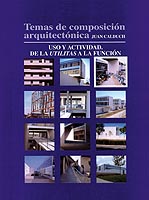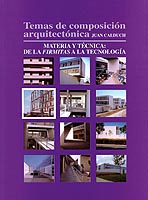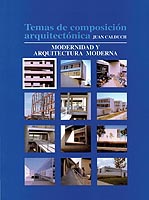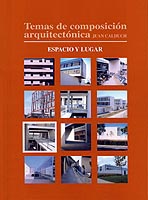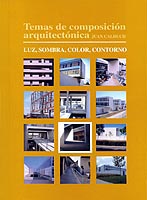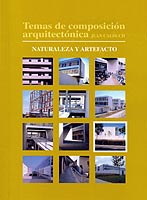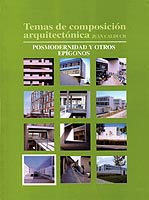Las analogías funcionalistas en la arquitectura moderna.
(EXTRAÍDO DEL LIBRO 3: “USO Y ACTIVIDAD. DE LA UTILITAS A LA FUNCIÓN”)
La manera histórica como ese pensamiento funcional se ha plasmado ha dado origen a diferentes posturas que los historiadores de la arquitectura contemporánea identifican fundamentalmente en tres. Peter Collins las llama:
1. La analogía moral (que dará origen a un funcionalismo moralista).
2. La analogía mecánica (de la que surge un funcionalismo mecanicista)
3. La analogía biológica (de la que se deriva el funcionalismo organicista).
Collins habla también de una analogía gastronómica que no vamos a comentar.
En cada una de estas tres analogías, ha predominado un aspecto distinto del pensamiento funcionalista.
En relación con la analogía moral, De Zurko la resume así:
“La arquitectura debe reflejar y fortalecer los ideales morales y éticos del hombre. Un edificio debe ser veraz, no deshonesto. Las formas deben ser exactamente lo que parecen. Todo edificio debe ser expresión fiel de su finalidad y de su época. Los materiales y sistemas estructurales deben ser utilizados con integridad y deben expresarse honradamente (.) La analogía moral también implica que el espíritu práctico es una virtud en arquitectura (...por lo que...) las formas ornamentales inútiles deben ser rechazadas.” 54
Este planteamiento destila un cierto puritanismo ético, que se manifiesta en la sinceridad de formas utilitarias, en el rechazo de todo juego formal y ornamental, etc. Es decir, puritanismo formal que expresa ese puritanismo moral.
La analogía mecánica, este mismo autor, la resume en la convicción de que:
“…la belleza, o por lo menos, cierto tipo de perfección formal, se desprende automáticamente de la más perfecta eficiencia mecánica y de que las creaciones perfectas de ingeniería alcanzan belleza sin necesidad de que se la busque deliberadamente. Las máquinas más perfectas constituyen, pues, una importante fuente de inspiración para los arquitectos. Estos deben proyectar sus edificios con el mismo espíritu con que los ingenieros proyectan sus obras industriales. (...Para Le Corbusier, Gropius, Meyer, etc...) los productos de la tecnología moderna deben tenerse como ejemplos de buen diseño y servir de inspiración a los arquitectos modernos. (... Y, según Bruno Taut...) ‘el objetivo de la arquitectura es la creación de la eficiencia perfecta, y por ende, también bella’.” 55
Evidentemente, esta analogía mecánica, surge del intento de trasladar al campo de la teoría arquitectónica los planteamientos de la revolución industrial (eficacia, racionalidad, etc.), que tan espectaculares resultados estaba dando, desde el S. XVIII en el campo de la producción.
Estas dos analogías (moral y mecánica) son las que habitualmente se identifican con el funcionalismo en sentido estricto. Y frecuentemente se considera al funcionalismo organicista, como la superación, y en cierta medida, la antítesis, del funcionalismo mecanicista. Tzonis y Lefaivre, al hablar del funcionalismo, hacen hincapié en la relación entre estetización y mecanización, como el eje sobre el que bascula este pensamiento, obviando el organicismo. En relación con el funcionalismo, así entendido, escriben:
“Defendía la reconciliación de las estructuras conceptuales de la mecanización y de la estetización, en esto confiaba más en la insistencia dogmática que en el discurso racional” 56
Estos autores señalan los dos principales significados del término funcionalismo. En primer lugar:
“La tendencia de algunos diseñadores modernos a favor de las consideraciones utilitarias, económicas o científicas frente a las preocupaciones ornamentales o simbólicas (... tendencia vinculada a...) la crítica moralista (... que supone considerar a la arquitectura...) como representación de la honestidad y la proyección de las aspiraciones de un mundo ético.” 57
Pero significa también el intento de:
“resolución de las contradicciones entre mecanización y estetización y, haciéndolo, creó una nueva organización visual de los edificios, un nuevo estilo que llevaba implícito un mensaje social y cultural (.) las normas de maximalización del placer por el consumo y minimalización de los costes de producción no llevaban necesariamente a un comportamiento contradictorio” para los funcionalistas. De aquí la crítica de esta postura: “el funcionalismo no se preocupaba de si el edificio era funcional o no; ese era el campo de la mecanización del diseño. El funcionalismo prestaba atención a la imagen de reconciliación entre la mecanización y la estetización.” 58
En suma, el funcionalismo entendido como estilo o elección formal tal como ya había dicho Muthesius.
Por último, la analogía orgánica, según De Zurko, parte de:
“…la convicción de que la naturaleza es bella y perfecta. Por consiguiente, la naturaleza debe ser una buena fuente de inspiración para los arquitectos (.) En las formas orgánicas de la naturaleza, cada parte -al igual que el todo- se conforma a su función. Los defensores de la analogía orgánica afirman que también la arquitectura debe ser orgánica. Existen interpretaciones algo discrepantes en la esfera de la arquitectura orgánica y el principio de la adaptación a la función no agota todos sus postulados.” 59
En la medida en que las diferentes teorías biológicas evolucionan a lo largo del S. XIX (Lamarck, Darwin, etc.), influirán en las teorías arquitectónicas que se basan en esta analogía. Teorías como la selección natural y la ‘lucha por la vida’, la economía de la naturaleza y la eliminación de lo superfluo, la adaptación de nuevas funciones a las formas y órganos preexistentes, etc. van a tener su reflejo en el pensamiento funcionalista organicista de la arquitectura.
Antes de continuar, conviene aclarar que, en tanto en cuanto estas tres posturas mencionadas son analogías, esto significa que las correspondencias con la arquitectura tienen sólo un alcance limitado. Traspasar los límites de validez de la analogía ha conducido, históricamente, a que el funcionalismo incurra en errores que ha dado origen a la critica de este pensamiento. Ya hemos visto algunos de ellos.
Vistas pues, conjuntamente, las tres principales vertientes por donde ha discurrido el funcionalismo en la arquitectura moderna, vamos a centrarnos de un modo más preciso en cada una de ellas, con el fin de conocer la evolución de este pensamiento, definir los limites de validez de las analogías respectivas y detectar los errores a los que nos pueden conducir.
54. DE ZURKO, E.R, op. cit., pág. 20.
55. Ibídem, pág. 19.
56. TZONI5. Alexander, LEFAIVRE, Liane, “La mecanización de la arquitectura y la doctrina funcionalista” en FERNÁNDEZ GALIANO, Luis (ed.) ARQUITECTURA, TÉCNICA Y NATURALEZA EN EL OCASO DE LA MODERNIDAD, MOPU, Madrid, 1984, pág. 52
57. Ibídem, pág. 52
58. Ibídem, pág. 52
59. DE ZURKO, E. R., op. CíS., pág. 19.
|
Functionalist analogies in modern architecture
(EXTRACT FROM BOOK 3, USO Y ACTIVIDAD. DE LA UTILITAS A LA FUNCIÓN [USE AND ACTIVITY. FROM UTILITAS TO FUNCTION])
The historical expression of functional thought has given rise to different approaches which historians of contemporary architecture identify essentially under three headings. Peter Collins speaks of:
1. Moral analogy (which gave rise to moral functionalism)
2. Mechanical analogy (which produced mechanical functionalism)
3. Biological analogy (leading to organic functionalism)
and also mentions a gastronomic analogy that we will not be discussing.
A different aspect of functionalist thinking has predominated in each.
De Zurko summarises the moral analogy as follows:
“Architecture should reflect and contribute to moral or ethical ideals. A building should be true, not dishonest. Forms should be exactly what they seem. Every building should be a true expression of its purpose and of its age. Materials and structural systems should be used with integrity and be honestly expressed (...) The moral analogy also means that practicality is a virtue in architecture (... consequently ...) useless forms of ornament are rejected.” 54
This attitude exudes a certain ethical puritanism: the sincerity of utilitarian forms, the rejection of any formal or ornamental effects, etc. In other words, a formal puritanism that expresses moral puritanism.
This same author summarises the mechanical analogy in his conviction that:
“... beauty, or at least a kind of formal perfection, results automatically from the most perfect mechanical efficiency, or that perfectly engineered creations achieve beauty without a conscious search for it. The most prefect machines are, therefore, an important source of inspiration to architects. Architects should design their buildings in the same spirit as engineers design their industrial structures. (...For Le Corbusier, Gropius, Meyer, etc...) the products of modern technology must be considered examples of good design and must be an inspiration to modern architects. (... And, according to Bruno Taut ...) ‘The aim of Architecture is the creation of the perfect, and therefore also beautiful, efficiency’.” 55
Evidently, the mechanical analogy arises out of the attempt to transfer the premises of the industrial revolution (efficiency, rationality, etc.), which had been achieving such spectacular results since the 18th century in the manufacturing area, to the field of architectural theory
These two analogies (moral and mechanical) are those usually identified with functionalism in a strict sense. Organic functionalism is often considered to have superseded mechanical functionalism and, to a certain extent, to be its antithesis. Tzonis and Lefaivre, on the subject of functionalism, emphasise the relationship between aestheticisation and mechanisation as the axis around which this thinking moves, omitting organicism. Of functionalism, understood in this sense, they write:
“It defended the reconciliation of the conceptual structures of mechanization and aestheticization, in this it trusted more in dogmatic insistence than in rational discourse”56
These authors point to two main meanings of the term functionalism. The first is:
“The tendency of some modern designers to favour utilitarian, financial or scientific considerations rather than ornamental or symbolic concerns (... a tendency which is linked to ...) the moralist criticism (... that entails considering architecture) a representation of honesty and the projection of the aspirations of an ethical world.” 57
However, it also means the attempt to:
“solve the contradictions between mechanization and aestheticization; in so doing, it created a new visual organisation of buildings, a new style that implicitly carried a social and cultural message (...) the norms of maximising the enjoyment of consumption and minimising production costs did not necessarily lead to contradictory behaviour” according to the functionalists. Hence the criticism of this stance: “functionalism was not concerned with whether or not the building was functional; that field belonged to the mechanization of the design. Functionalism paid attention to the image of reconciliation between mechanization and aestheticisation.” 58
In short, functionalism was understood as a style or formal choice, as Muthesius had already said.
Lastly, according to De Zurko the organic analogy is based on:
“... the conviction that nature is beautiful and perfect. Consequently, nature must be a good source of inspiration to architects (...) In the organic forms of nature, each part – and the whole – fits its function. The defenders of the organic analogy assert that architecture too should be organic. There are somewhat discrepant interpretations in the sphere of organic architecture and the principle of adaptation to function does not exhaust all its postulates.” 59
As biological theories evolved over the 19th century (Lamarck, Darwin, etc.), they influenced the architectural theories that were based on this analogy. Theories such as natural selection and the survival of the fittest, nature’s economy and the elimination of the superfluous, adapting new functions to existing forms and organs, etc. are reflected in the organic functionalist view of architecture.
Before continuing, it should be explained that insofar as these three approaches are analogies, their correspondences with architecture are only of limited scope. Exceeding the valid limits of the analogy has, historically, led functionalism into errors that have given rise to criticism of this line of thinking. We have already examined some of these.
Having given an overview of the three main facets of functionalism in modern architecture, let us now focus more precisely on each in order to follow its evolution, define the limits of validity of the respective analogies and detect the errors into which they can lead.
54. DE ZURKO, E.R, op. cit., pág. 20.
55. Ibídem, pág. 19.
56. TZONI5. Alexander, LEFAIVRE, Liane, “La mecanización de la arquitectura y la doctrina funcionalista” [The Mechanization of Architecture and Functionalist Doctrine] in FERNÁNDEZ GALIANO, Luis (ed.) ARQUITECTURA, TÉCNICA Y NATURALEZA EN EL OCASO DE LA MODERNIDAD [Architecture, Technique and Nature at the Decline of Modernism], MOPU, Madrid, 1984, pág. 52
57. Ibídem, pág. 52
58. Ibídem, pág. 52
59. DE ZURKO, E. R., op. CíS., pág. 19.
|
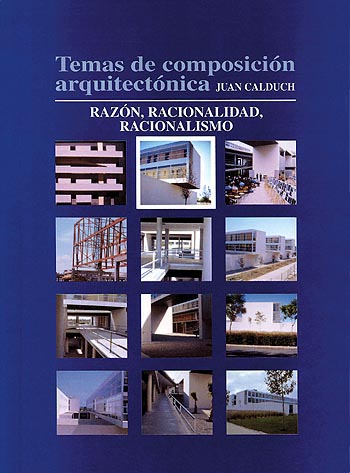
|
Panorama desde el presente: arquitectura, construcción y tecnología. La supervivencia de la arquitectura.
(EXTRAÍDO DEL LIBRO 4: “MATERIA Y TÉCNICA: DE LA FIRMITAS A LA TECNOLOGÍA”)
Ya he mencionado algunas de las soluciones que, en mi opinión, son posibles para superar la actual situación de estancamiento en que se encuentra la tecnología constructiva, y las fricciones y conflictos que existen en su relación con la creación de la obra de arquitectura.
Es un error grave, heredado de la tradición vitruviana, seguir considerando que el proceso de creación de la arquitectura se produce en dos fases sucesivas, identificando la primera con la creatividad que a su vez se concreta en el proyecto, y la segunda con la construcción a la que se le niega cualquier aportación creativa. No cabe duda que los conocimientos constructivos necesarios, y las condiciones materiales de la construcción inciden de un modo relevante en la forma y el lenguaje de la arquitectura, y por lo tanto, no pueden estar ausentes Y de hecho, consciente o inconscientemente, no lo están, en ninguna de las fases de la creación arquitectónica. Como dice Juan Navarro, la huella del lápiz que define la forma esta plasmando, a la vez, su materialización.
Los conocimientos constructivos que corresponden al arquitecto abordan este problema de manera global y unitaria. Y en este sentido, intervienen tanto en las condiciones de durabilidad (la firmitas de Vitruvio) como en las del uso y habitabilidad (la utilitas) y en el significado de la obra (la venustas). La construcción es el medio para conseguir todos esos fines. Y además debe conseguirlos en todos y cada uno de los elementos que componen la arquitectura, y en el edificio considerado en su conjunto.
El pensamiento técnico mecanizado, uno de los aspectos relevantes de la cultura moderna, ha conducido a que la construcción, como conjunto de técnicas, tenga que ser abordada ineludiblemente como construcción industrializada. Pero esto no significa que la imagen de la construcción como producto de la industria tenga suplantar la imagen de la arquitectura. La imagen de la técnica, como la técnica misma, debe integrarse en su justa medida en todo el proceso creativo y en la imagen final del edificio.
Los fracasos de la industrialización (basada en procedimientos cerrados, la llamada prefabricación dura), y la necesidad de que el ocupante se apropie de su propia vivienda y de su entorno construido, hacen que, al menos en el campo de la arquitectura residencial, sea necesario buscar un nuevo modelo de industrialización de la construcción donde la autoconstrucción y la fabricación de componentes se coordinen. Quizás el sistema Balloon puede resultar esclarecedor del posible camino a seguir.
La situación actual donde todos estos conflictos siguen planteados sin que se vislumbre su resolución, peligrando la propia supervivencia de la profesión de arquitecto como persona capaz de hacer coincidir toda una serie de objetivos puestos al servicio de los usuarios y de acuerdo con unos sistemas técnicos disponibles, ya la expuso en 1960 Reyner Banham cuando escribe:
“El arquitecto que se propone seguir la marcha de la tecnología sabe ahora que tendrá una compañera rápida y que si desea mantenerse junto a ella sin quedar atrás deberá emular a los futuristas y dejar de lado toda su carga cultural, incluyendo las vestiduras profesionales mediante las cuales todo el mundo le reconoce como arquitecto. En cambio, si decide no hacerlo quizás descubra que la cultura tecnológica ha decidido seguir adelante sin él” 99
Aunque en mi opinión, la situación no es exactamente así. La arquitectura es una mediación entre la técnica y el mundo social en el que surge. Y si es cierto que la técnica es una compañera rápida, el arquitecto es capaz de adaptarse a los cambios, mucho más lentos, del medio cultural y social al que la arquitectura simboliza.
99. BANHAM, R., op. cit., pág.316.
Arquitectura y naturaleza: algunas conclusiones.
(EXTRAÍDO DEL LIBRO 9: NATURALEZA Y ARTEFACTO)
Para concluir quisiera recordar algunas ideas apuntadas.
La arquitectura no es, como pensaba Wright, un objeto natural sino que, por el contrario, es un artefacto en el sentido más genuino.
Pero sus relaciones con lo natural, no pueden quedar reducidas a poner de manifiesto el control técnico, el uso y la transformación que el hombre introduce en la naturaleza, como se podría deducir de la frase de Le Corbusier citada al principio (‘La casa ... es, primeramente, una máquina para vivir’).
El conocimiento de la naturaleza, la conciencia de que somos parte de ella, la constatación de que dependemos de ella, que es nuestro ámbito de vida, deben conducirnos a abrir, como postulaba Ilya Prigogine, un nuevo diálogo entre el hombre, sus obras, y la naturaleza.
Un nuevo diálogo que se manifestará en las tres escalas a las que se establecen las relaciones del hombre con la naturaleza, es decir, a la escala del medio, del territorio y del terreno.
Ese nuevo diálogo, fruto de un más profundo conocimiento de la naturaleza, debe manifestarse en un modo de usarla distinto, que garantice su sostenibilidad, la regeneración espontánea de su equilibrio, su recuperación, etc. En definitiva, debe conducirnos a una ética distinta de usar y transformar la naturaleza.
Una actitud ética que abre la vía a una reflexión estética, manifestada: en la escala del territorio, en la fruición del paisaje y, dentro de él, en la relación entre la naturaleza y la ciudad; y en la escala del terreno, en el papel de bisagra entre el hombre y la naturaleza que deben desempeñar tanto el jardín como el edificio.
El fracaso de la modernidad.
(EXTRAÍDO DEL LIBRO 10: POSTMODERNIDAD Y OTROS EPÍGONOS)
En este trabajo no trato de entrar detalladamente a analizar como esa conciencia del fracaso de la modernidad ha ido aflorando en la cultura actual. Bastará aludir a algunos de los aspectos mas evidentes donde los valores de la cultura moderna se han desvirtuado hasta llegar a convertirse en contravalores.
Si la razón y la racionalidad (paradigmáticamente expresada por la racionalidad científica) era prácticamente el único criterio de valoración y de juicio del hombre moderno en su búsqueda de la verdad, en su evolución histórica, esa racionalidad (científica, económica, social) ha sido paulatinamente puesta al servicio de unos fines irracionales. Una Razón (con mayúscula hegeliana) que se antepone así a los propios hombres sometidos a ‘razones’ políticas, económicas, productivas. En el momento en que se someten medios racionales y eficaces (científicos, técnicos, productivos) a fines no racionales (el poder, la dominación, la explotación, la destrucción), la razón moderna queda reducida a una razón instrumental11. La guerra científica, desde la II Guerra Mundial a las guerras cibernéticas actuales, sería el ejemplo más flagrante de una racionalidad de medios eficaces puestos al servicio de fines no racionales e incluso ilícitos. Pero no es el único. La destrucción científica y sistemática del planeta (fauna, flora, reservas naturales, capa de ozono...) puesta al servicio del despilfarro energético de unos pocos a costa de la supervivencia de la mayoría, es otro ejemplo ampliamente conocido. En definitiva, el fracaso de la racionalidad moderna es consecuencia de su puesta al servicio de fines no racionales, de su transformación en una racionalidad instrumental.
El fracaso de la libertad, otro de los mitos de la cultura moderna, ha venido por su devaluación al quedar reducida al puro capricho individualista y personal. Se es libre siempre que esa libertad se ejerza en el ámbito personal y no ponga en cuestión el orden establecido. Se es libre siempre que se acepte resignadamente la dependencia tecnológica, económica, social. Pero nada de revoluciones de cualquier tipo que puedan poner en crisis el orden o el poder. Es pues una caricatura, un espejismo de libertad que permite mantener las cosas como están, la estructura del poder inalterada. En definitiva, se puede aceptar libremente el sometimiento ideológico, político y económico, y es sólo en ese aspecto en el que se nos deja ejercer nuestra libertad condicionada.
Es evidente que hoy, nadie mínimamente informado, defendería que realmente todos los hombres son iguales. Está claro que hay ciudadanos del mundo de primera, de segunda y de tercera clase conviviendo entre sí y aceptando resignadamente esta situación. Que legalmente se siga manteniendo la utopía moderna de que todos los hombres son iguales no es óbice para que todo el mundo sepa y acepte que eso no es así, que cada vez lo es menos y que parece que nunca lo será. La frase de Orwell de que
“todos los animales son iguales, pero hay unos que son más iguales que otros,’ (George Orwell, Rebelión en la granja, 1946), aunque referida al estalinismo, se ha convertido hoy en una trágica realidad. Lyotard escribe:
“La humanidad está dividida en dos partes. Una de ellas se enfrenta al desafío de la complejidad, la otra, la más vieja, ha de habérselas con el terrible desafío de su propia supervivencia. Este es, quizás, el principal aspecto del fracaso del proyecto moderno que, te recuerdo, valía en principio para la humanidad en su conjunto”.12
Sobre el fracaso del concepto de progreso entendido como un avance histórico de toda la humanidad hacia el bienestar y la mejora en las condiciones de vida, este mismo autor escribe:
“El desarrollo de las tecnologías se ha convertido en un medio de acrecentar el malestar (... y la desigualdad...), no de calmarlo. Ya no podemos llamar a este desarrollo progreso” 13
Un desarrollo tecnológico que es un mecanismo de destrucción del medio y una amenaza para la supervivencia, con la sensación agravante de la impotencia para parar este proceso.
No vale la pena seguir enumerando cómo los diferentes valores que sustentaban la cultura moderna han sido tergiversados hasta ser irreconocibles en la actualidad. Los temas apuntados nos dan una idea clara de ese fracaso de la modernidad tal como históricamente se ha realizado a lo largo de los dos últimos siglo y que en las últimas décadas ha experimentado un proceso de aceleración.
La constatación de este fracaso condujo, desde mediados del siglo XX, a buscar las causas y a plantear posibles explicaciones. Surgirá así una crítica a la modernidad.
11. Esta es, precisamente la crítica a la razón de ADORNO. Ve ase WELLMER, Albrecht, SOBRE LA DIALÉCTICA DE MODERNIDAD Y POSTMODERNIDAD. LA CRÍTICA DE LA RAZÓN DESPUÉS DE ADORNO, Visor, Madrid, 1993.
12. LYOTARD, J. F., op. cit., pág 92.
13. Ibídem, pág. 92 |
Panorama from the present: architecture, construction and technology. The survival of architecture.
(EXTRACT FROM BOOK 4: MATERIA Y TÉCNICA: DE LA FIRMITAS A LA TECNOLOGÍA [MATERIALS AND METHODS: FROM FIRMITAS TO TECHNOLOGY]
I have already mentioned some solutions, possible ones in my opinion, for overcoming the current stagnation in construction technology and the frictions and conflicts in its relations with the creation of a work of architecture.
A serious error inherited from the tradition of Vitruvius is to continue to consider that the process of creating architecture takes place in two stages: creativeness, realised in the design, and construction, which is denied any creative contribution. There is no doubt that the necessary knowledge of construction and the material conditions in which it takes place influence the form and language of architecture considerably and, therefore, that they cannot be absent. Indeed, consciously or unconsciously, they are not absent from any stage of architectural creation. As Juan Navarro says, the pencil marks that define the form at the same time capture its materialisation.
The knowledge of construction that the architect must have approaches this problem in a global, unitary manner. It plays a part in the work’s durability (Vitruvius’ firmitas), use and habitability (utilitas) and meaning (venustas). Building is the means to achieve all these ends. Moreover, it must achieve them in each and every one of the elements that make up architecture and in the building considered as a whole.
Mechanised technical thinking, a prominent feature of modern culture, has reached a point where building, as a set of techniques, must ineluctably be approached as industrialised building. However, this does not mean that the image of building as an industrial product must supplant the image of architecture. The image of the technology, like the technology itself, must be integrated in its just measure into the entire creative process and into the final image of the building.
The failures of industrialisation (based on closed processes, known as prefabricación dura or hard prefabrication) and the need for the occupants to make the dwelling their own, and its built surroundings also, mean that, at least in the field of residential architecture, we need to find a new model of industrialisation for building that is capable of coordinating self-construction and component manufacture. The Balloon system might illuminate the path that could be followed.
The current situation, where all these conflicts are still extant and no solution is in sight, where survival of the architect as a professional who is able to bring together a whole series of objectives to serve the users in the light of the available technical systems, was already expounded by Reyner Banham in 1960 when he wrote:
“The architect who proposes to run with technology knows now that he will be in fast company and that, in order to keep up, he may have to emulate the Futurists, and discard his whole cultural load, including the professional garments by which he is recognized as an architect. However, if he does not do so he may find that technological culture will forge ahead without him”99
In my opinion, however, this is not exactly the situation. Architecture is a mediation between technology and the social world in which it arises and although technology is certainly fast company, the architect is capable of adapting to the far slower changes of the cultural and social medium symbolised by architecture.
99. BANHAM, R., op. cit., pág.316.
Architecture and nature: a few conclusions.
(EXTRACT FROM BOOK 9: NATURALEZA Y ARTEFACTO [NATURE AND ARTEFACT])
In conclusion, I would like to recall a few ideas.
Architecture is not a natural object, as Wright believed. On the contrary, it is an artefact in the truest sense of the word.
However, its relations with what is natural cannot be confined to highlighting the technical control, use and transformation that man introduces into nature, as might be deduced from Le Corbusier’s saying, quoted at the start, that ‘a house ... is, firstly, a machine for living in’.
A knowledge of nature, the awareness that we are part of it, the confirmation that we depend on it, that it is the sphere in which we live, should lead us, as Ilya Prigogine postulated, to establish a new dialogue between man, his works, and nature.
This new dialogue will be expressed on the three scales of the relations between man and nature: environment (medio), area (territorio) and site (terreno).
This new dialogue, the result of a deeper knowledge of nature, must be shown by a different way of using it, one that guarantees its sustainability, the spontaneous regeneration of its balance, its recovery, etc. In short, it must lead us to a different ethics of using and transforming nature.
An ethical attitude that opens the door to aesthetic reflection, shown at area scale in the enjoyment of the landscape and, within this, in the relation between nature and the city, and at site scale, on the rôle as hinges between man and nature that both the garden and the building must play.
The failure of modernism
(EXTRACT FROM BOOK 10: POSTMODERNIDAD Y OTROS EPÍGONOS [POST-MODERNISM & OTHER FOLLOWERS-ON])
This work does not attempt to enter into a detailed analysis of how awareness of the failure of modernism gradually surfaced in the culture of today. It will suffice to allude to some of the more obvious aspects in which the values of modern culture have been distorted to the point of turning into counter-values.
While reason and rationality (paradigmatically expressed by scientific rationality) have been practically the only criterion of assessment and judgement in modern man’s search for truth, this rationality (scientific, economic, social), evolving over time, has gradually been placed at the service of irrational ends. Reason (with a capital, as in Hegel) is thus raised above people themselves, who are subjected to political, economic and productive ‘reasons’. The moment that rational and effective means (scientific, technical productive) are subjected to irrational ends (power, domination, exploitation, destruction), modern reason is reduced to instrumental reason11. Scientific warfare, from World War II to the cybernetic wars of today, is the most flagrant example of a rationality of effective means placed at the service of irrational, even illicit, ends. However, it is not the only one. The scientific, systematic destruction of the planet (fauna, flora, natural resources, ozone layer, etc.), placed at the service of the squander of energy by the few at the expense of the survival of the majority is another widely-known example. In short, the failure of modern rationality is the result of its having been placed at the service of irrational ends, of its transformation into an instrumental rationality.
The failure of liberty, another myth of modern culture, is the result of devaluing it by reducing it to a purely personal, individualistic whim. One is free providing one’s freedom is exercised in the personal sphere and does not question order, the status quo. One is free providing one resigns oneself to technological, economic and social dependency. No revolutions of any kind that could cause a crisis of power or order are allowed. This is a caricature, a mirage of liberty that allows things to be kept as they are, with the power structure unruffled. In short, ideological, political and economic subjugation can be freely accepted, and this is the only way in which we are allowed to exercise our conditional liberty or parole.
Evidently, nobody nowadays who is even minimally well-informed can argue that all men are really equal. It is obvious that there are first, second and third class citizens of the world, living together and resigned to this situation. The fact that the law maintains the modern utopia that all men are equal is no impediment to everyone knowing and accepting that it is not so, is increasingly less so and seemingly never will be so. Although Orwell’s
“all animals are equal, but some animals are more equal than others” (George Orwell, Animal Farm, 1946) was a reference to Stalinism, it has become the tragic reality. As Lyotard wrote:
“Humanity is divided into two parts. One faces the challenge of complexity, the other that ancient and terrible challenge of its own survival. This is perhaps the most important aspect of the failure of the modern project which, remember, initially served humanity as a whole.”12
On the failure of the concept of progress as the historical advance of all mankind towards better living conditions and wellbeing, the same author wrote:
“Technology has become a means of deepening our malaise (... and inequality...) rather than relieving it. We can no longer call this development progress.”13
This technological development is a mechanism that destroys the environment and threatens survival, aggravated by the feeling of impotence to stop the process.
It is not worth continuing the list of how the different values that underpinned modern culture have been twisted until they are now unrecognisable. The issues mentioned give a clear idea of the failure of modernism as realised historically over the past two centuries, which has quickened its pace in recent decades.
Since the mid 20th century, the evidence of this failure has led to a search for the causes and possible explanations, giving rise to a critical discussion of modernism.
11. This is precisely ADORNO’s criticism of reason. See WELLMER, Albrecht, SOBRE LA DIALÉCTICA DE MODERNIDAD Y POSTMODERNIDAD. LA CRÍTICA DE LA RAZÓN DESPUÉS DE ADORNO [On the dialectics of Modernism and Post-Modernism. The Critique of Reason after Adorno], Visor, Madrid, 1993.
12. LYOTARD, J. F., op. cit., pág 92.
13. Ibídem, pág. 92 |
|
